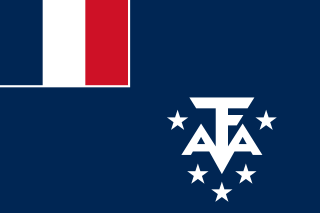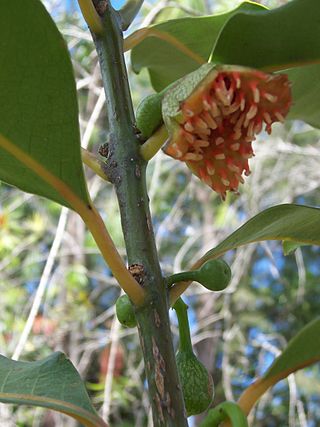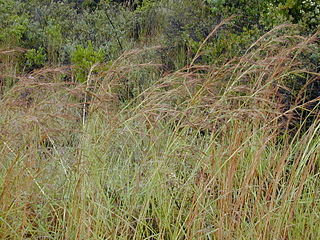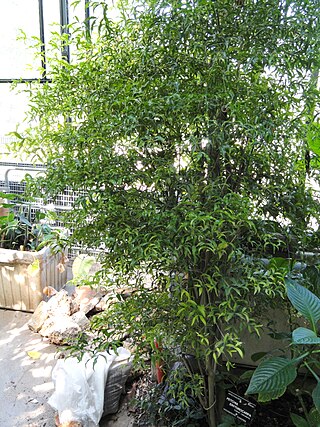The history of the Comoros extends to about 800–1000 AD when the archipelago was first inhabited. The Comoros have been inhabited by various groups throughout this time. France colonised the islands in the 19th century, and they became independent in 1975.

The Comoro Islands or the Comoros are an archipelago of volcanic islands situated off the southeastern coast of Africa, to the east of Mozambique and northwest of Madagascar. The islands are politically divided between the Union of the Comoros, a sovereign country, and Mayotte, an Overseas Department of France.

The Scattered Islands in the Indian Ocean consist of four small coral islands, an atoll, as well as a reef in the Indian Ocean; they have constituted the fifth district of the French Southern and Antarctic Lands, though sovereignty over some or all of the islands is contested by the Comoros, Madagascar, and Mauritius. None of the islands have ever had a permanent population, though the French armed forces maintain small troop contingents on some of the islands.
The franc is the official currency of Comoros. It is nominally subdivided into 100 centimes, although no centime denominations have ever been issued.
Tannodia is a plant genus of the family Euphorbiaceae first described as a genus in 1861. It is native to Africa, Madagascar, and Comoros. It is dioecious.
- Tannodia congolensis - Zaïre
- Tannodia cordifolia - Comoros, Madagascar
- Tannodia grandiflora - Diana Region in Madagascar
- Tannodia nitida - Atsinanana in Madagascar
- Tannodia obovata - Atsinanana in Madagascar
- Tannodia pennivenia - Atsinanana in Madagascar
- Tannodia perrieri - Madagascar
- Tannodia swynnertonii - Tanzania, Mozambique, Zimbabwe
- Tannodia tenuifolia - Kenya, Tanzania, Malawi, Mozambique, Zimbabwe, Zambia

The Fédération de Football des Comores (FFC) is the governing body of football in the Comoros. It was founded in 1979, affiliated to FIFA in 2005 and to CAF in 2003. It organizes the national football league and the national team. The first official international played by Comoros was played on the 17 November 2007 against Madagascar for the qualification of 2010 FIFA World Cup and the African Cup of Nations 2010. Comores recorded its first ever win in international football by beating Botswana 1-0 in 2016.
The association football tournament at the Indian Ocean Island Games which is organised every 4 years for the Islands in the Indian Ocean.

The Malagasy paradise flycatcher is a species of bird in the family Monarchidae. It is found in Comoros, Madagascar, and Mayotte. Its natural habitats are subtropical or tropical dry forest and subtropical or tropical moist lowland forest.

Mimusops is a genus of plants in the family Sapotaceae described as a genus by Linnaeus in 1753.

Tambourissa is a genus of plant in family Monimiaceae. Its range includes Madagascar, the Comoro Islands, Réunion, and Mauritius. It contains the following accepted species, according to ThePlantList.org:
Werner Rauh was a German biologist, botanist and author.

Hyparrhenia is a genus of grasses. Many species are known commonly as thatching grass.
Ludia is a genus of flowering plants in the family Salicaceae.
Danais is a genus of flowering plants in the family Rubiaceae. Most species are native to Madagascar; at least three others are distributed in Tanzania, Comoros, and the Mascarene Islands.

Petchia is a genus of plant in the family Apocynaceae, first described as a genus in 1926. It is native to Madagascar, Cameroon, the Comoros and Sri Lanka.
- Petchia africanaLeeuwenb. - Cameroon
- Petchia ceylanica(Wight) Livera - Sri Lanka
- Petchia cryptophlebia(Baker) Leeuwenb. - Madagascar
- Petchia erythrocarpa(Vatke) Leeuwenb. - Comoros, Madagascar
- Petchia humbertii(Markgr.) Leeuwenb. - Madagascar
- Petchia madagascariensis(A.DC.) Leeuwenb. - Madagascar
- Petchia montana(Pichon) Leeuwenb. - Madagascar
- Petchia plectaneiifolia(Pichon) Leeuwenb. - Madagascar
Cannabis in Madagascar is illegal, but is produced and consumed domestically.
Henri Chermezon was a French botanist.

Comoros–India relations are the international relations that exist between Comoros and India. The Embassy of India in Antananarivo, Madagascar is concurrently accredited to Comoros. India also maintains an Honorary Consulate General in Moroni. Comoros maintains an Honorary Consulate in New Delhi.
This is a list of international football games played by the Comoros national football team from 1979 to 2019.
Dieter Carl Wasshausen is an American botanist who specialized in spermatophytes. In 1962 he started working at the Smithsonian Institution as a technician. He studied at the George Washington University, receiving a PhD in 1972. In 1976 he became chairman of the Botany Department, a post he held until 1982.








